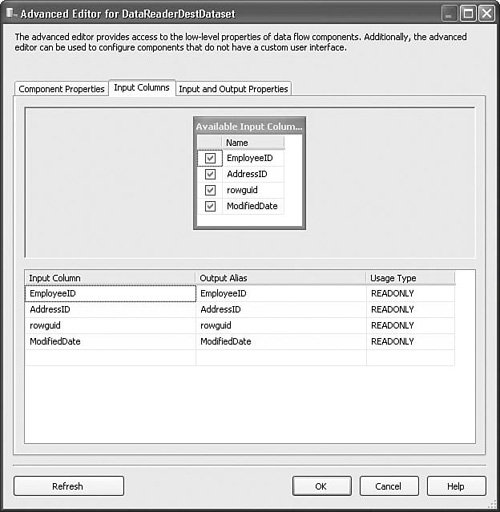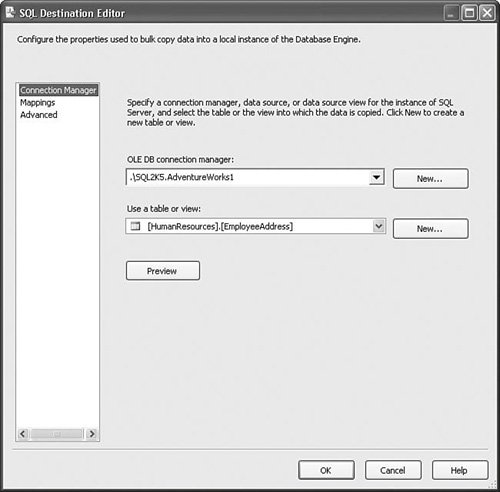Destination Adapters
| The destination adapters provide the means to write the results of the data flow to an output. The output isn't always a database table or flat file. For example, the DataReader Destination Adapter writes to an in-memory dataset and doesn't even require a connection manager. DataReader DestinationThe DataReader Destination Adapter is useful for integrating the data flow from a package into external applications that support consuming data from datasets. This destination requires some additional setup on the client that consumes the data. This is useful for getting data into clients that typically only support a specific database server or for doing real-time transformation on data before landing it to the client. Table 20.30 provides the profile for this component.
Setting Up the ComponentFigure 20.39 shows the Advanced Editor for the DataReader Destination Adapter. The columns selected are included in the dataset. Figure 20.39. The DataReader Destination Adapter Recordset DestinationThe Recordset Destination Adapter populates an ADO recordset and stores it in a package variable that can be used outside of the data flow. For example, you can generate a recordset that can be used later in the same package workflow in a Foreach Loop or Script Task. Table 20.31 provides the profile for this component.
Setting Up the Recordset Destination AdapterTo set up the Recordset Destination Adapter, simply open the Advanced Editor and specify an object type variable where the recordset will be stored. SQL Server DestinationThe SQL Server Destination Adapter is a high-performance, shared memory insert mechanism. It uses the bulk insert API and directly inserts rows from the buffer to the SQL Server engine memory. For getting data into new SQL Server tables, this is the fastest method, hands down. Table 20.32 provides the profile for this component.
Setting Up the SQL Server Destination AdapterTo set up the SQL Server Destination Adapter, specify an OLE DB Connection Manager and the table to insert into. Then select the Mapping tab and map the columns. That's about it. Figure 20.40 shows the SQL Server Destination Editor. Figure 20.40. The SQL Server Destination Editor Advanced SettingsThe SQL Server Destination Adapter also provides some knobs and switches you can tweak to modify the insert. The advanced options are listed in Table 20.33.
Tip If possible, for best performance, Table Lock should be enabled and the rest of the options should be turned off. |
EAN: 2147483647
Pages: 200